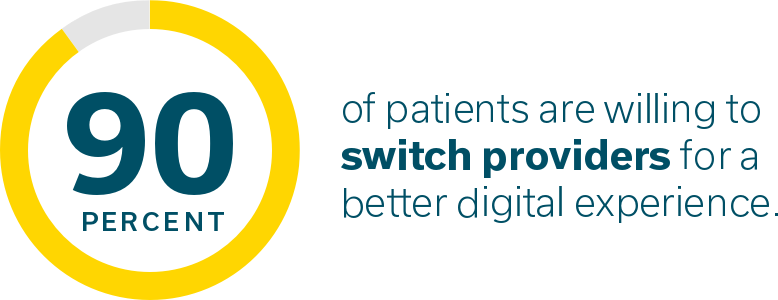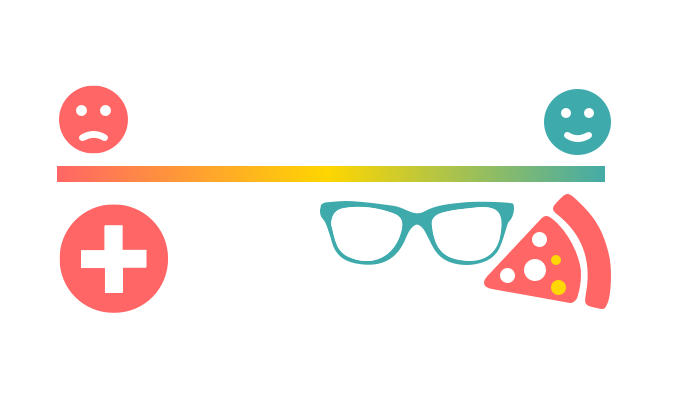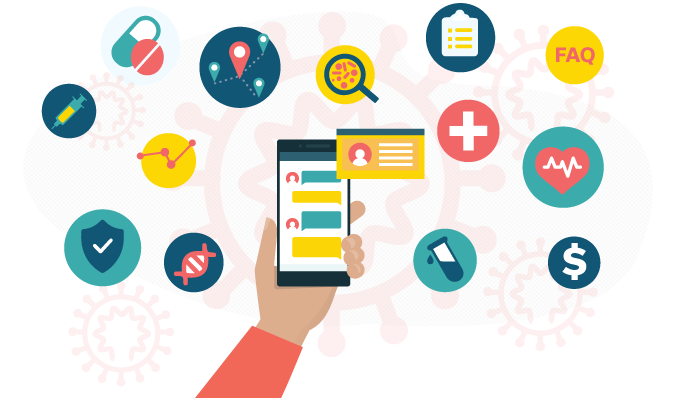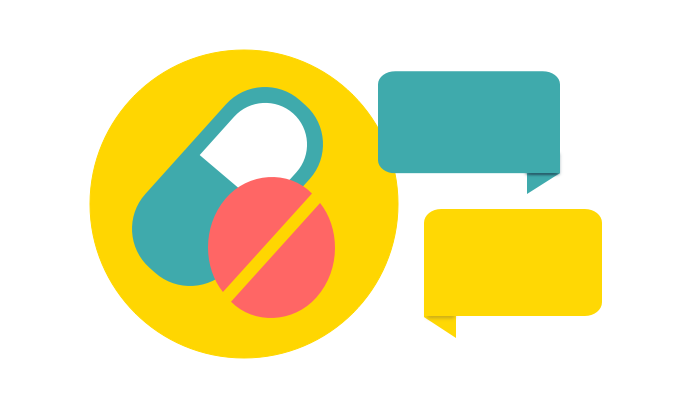Companies these days are killing the service game. It’s no longer just about the quality of a product anymore. Instead, it’s about how the product is delivered. Today’s consumers are buying experiences, not products. In fact, 80% of consumers believe that the experience a company provides is as important as that company’s products and services.
Take UberEats. Getting a pizza delivered isn’t rocket science. But by giving consumers the ability to track their order, from kitchen to doorstep, UberEats elevates the service dimensions surrounding the food. It’s not just about how hot or fresh the pizza is anymore; it’s about having the pizza delivered wherever, whenever, and having the ability to track it in real time.
Warby Parker is another example of a company delivering more than just a product. Warby Parker’s edge rests in personalization and catering to the needs of its consumers. Warby lets you take a quiz to determine what kinds of glasses you might prefer before offering you a selection of frames to choose from. If you still can’t decide, they’ll ship you five frames to try on for free, and even include a prepaid return label to send them back when you’ve made your decision.

Consumer Expectations Are Evolving
So what are the key takeaways from these experiences? First, consumers want control over their purchases more than ever, whether that’s through personalization or real time updates. Shockingly, 81% of consumers are more likely to repurchase from businesses that offer updates on the progress of an order or delivery. At the same time, consumers expect that when things go wrong they won’t be left to figure it out on their own. They’ll pick up their phone and call their UberEats driver to figure out where to meet them, or they’ll live chat Warby Parker with questions. In short, these companies are providing consumers the tools they need to make the best purchase, while providing a high touch experience consumers can rely on.
When we pivot and look at the healthcare industry, it’s clear these lessons haven’t transferred, even though 90% of patients are willing to switch providers for a better digital experience. Think of the last time you took a trip to the hospital. You likely spent most of it waiting around, with no information about when your doctor would be in to see you. The treatment you received was probably top notch, but the method of delivery leaves much to be desired. It’s like getting the best pizza you’ve ever eaten delivered to you, except it took two hours and your driver never picked up their phone and you had no idea where your pizza was the entire time.

We’ve spent so much time focusing on clinical efficiency and perfection that we’ve forgotten about how we actually deliver it to patients. In the high stress, high stakes environment of healthcare, giving patients control and transparency is more important than ever. The success of their treatment might be uncertain, but let them have the certainty that they won’t be left in the dark. Don’t leave them sitting in a waiting room or an exam room without giving them a play by play of what’s happening and more importantly, what’s going to happen.
Delivering the Patient Experience on Their Terms
The healthcare industry needs to reframe its perception of patients. We’ve been forcing patients to meet us where we are, when every other industry has flipped that paradigm. We force patients to fill out mountains of forms, figure out their care plan instructions, and decode their medical bills, all largely on their own. This practice makes financial sense; the more work we give to patients, the less work doctors have to do. The standard defense of this practice has been that patients can still call in if they have questions; the fact that they don’t is evidence of their apathy. But what if there’s another explanation for this type of patient behavior we haven’t considered?
We assume noncompliant patients are ignorant or lazy, incapable of following instructions. We place the blame on the patients’ shoulders and tell them to go home and study their discharge instructions more carefully. We’ve never stopped to wonder whether it isn’t ignorance or irresponsibility that drives this type of patient behavior, but rather confusion. Like Victor Montori writes in his book Why We Revolt: A Patient Revolution for Careful and Kind Care, our approach to patient education is “as if we keep screaming directions to the lost tourist in a language they still cannot understand.”
As the healthcare industry moves towards digitization, we need to treat patients like consumers and learn from other industries how to build the perfect experience. It’s time for healthcare to move beyond portals and online learning tools and embrace conversational technology, the way other industries have. Chatbots offer hospitals the trifecta of personalization, standardization, and scalability.
Conversational Patient Engagement
Chatbots can allow hospitals to reach the same service level as UberEats and Warby Parker. Chatbots both provide patients with information and act as a touchpoint between a hospital and a patient. Patients want control over their medical situations, in the same way they want control over their purchasing decisions. But instead of providing real time locations of an UberEats driver, a chatbot can provide patients with real time updates on their surgeries, using words they understand. Instead of ETA updates on a delayed food delivery, a chatbot can give a patient a clear explanation about why their X-ray has been delayed. And instead of a quiz to determine someone’s next pair of spectacles, a chatbot can help find patients find doctors that most closely fit their preferences.
We need to craft the healthcare experience as carefully as we craft a patient’s care plan. We need to transform how this industry does things until patients can speak about their experiences in a hospital the way they might talk about their favorite brands or their favorite stores. Good service, good products, good customer service: the building blocks of any industry, including healthcare.



.png)




